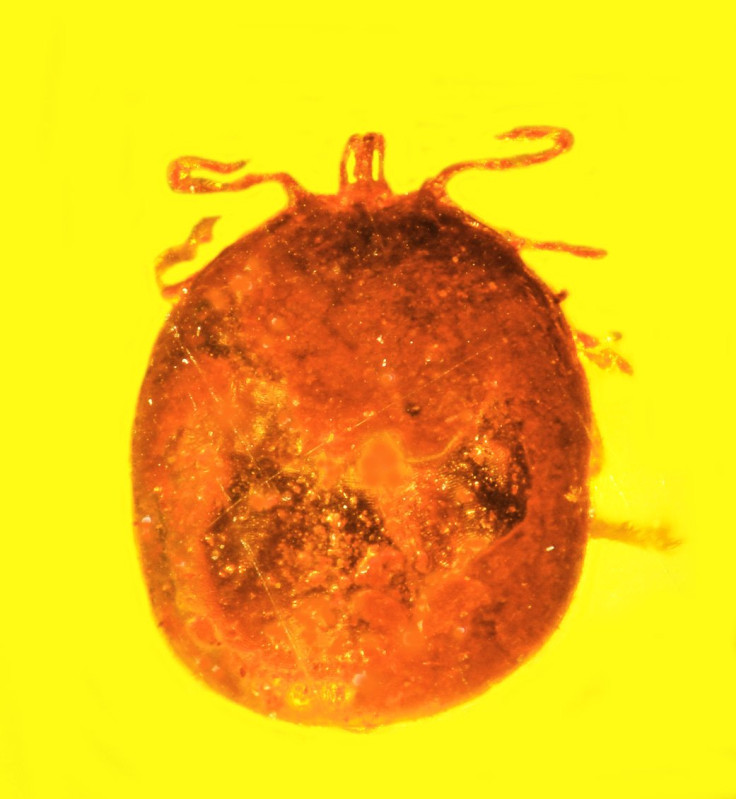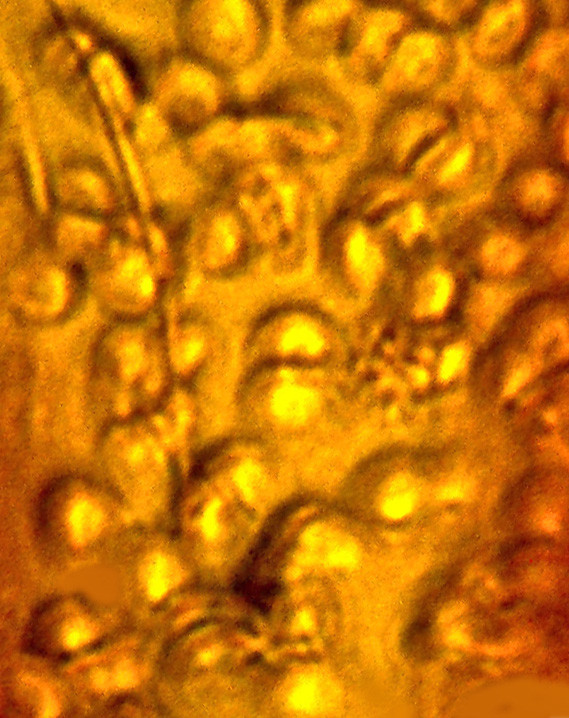Tick full of 30-million-year-old monkey blood discovered trapped in amber fossil
The fossil is thought to be between 15 and 30 million years old.

Scientists have discovered a blood-engorged tick in ancient amber in the Dominican Republican. They believe this may have been the blood of a monkey, fossilised up to 30 million years ago.
Ticks are known to transmit a variety of pathogens to mammals, and to have done so for millions of years. However, the fossilised record of this is very rare.
George Poinar Jr is a professor emeritus at Oregon State University who first hypothesised that it was possible to find ancient DNA in amber – an idea which inspired the movie Jurassic Park.
The scientist has been recognised worldwide as an expert in using plant and animal life forms preserved in the semi-precious stone to learn more about the ecology of the distant past.
In the last decades, the scientist has uncovered many examples of amber fossils which bear witness to ancient life on Earth. Among his most significant finds, a type of malaria preserved in a 15-20 million amber, and a new fossilised species of flower.
The amber fossil full of monkey blood is thus only the latest discovery in series of incredible fossil finds.
Plucking off a tick

The fossil is now described in the Journal of Medical Entomology. It was collected in mines in the Dominican Republic, in the Cordillera Septentrional mountain range.
Analyses revealed that a 2.5 mm long tick from the genus Amblyomma had become trapped inside it. The fossil is thought to be between 15 and 30 million years old.
The tick was gorged with blood which the scientist says is probably to have been monkey blood. Indeed, the size of the blood cells are consistent with that of primates.
This was further backed up by the fact that blood parasites known as Babesia microti, which are responsible for a tick-born disease that still affects monkeys today, were also present in the sample.
It is possible that the tick infested a monkey which plucked it off and left it in sticky tree resin, which fossilised into amber as time went by.
"Two tiny holes indicate that something picked a tick off the mammal it was feeding on, puncturing it in the process and dropping it immediately into tree sap," said George Poinar, Jr.
"This would be consistent with the grooming behavior of monkeys that we know lived at that time in this region. The fossilized blood cells, infected with these parasites, are simply amazing in their detail. This discovery provides the only known fossils of Babesia-type pathogens."
It is unlikely that DNA will be extracted from this small fossil to confirm whether this is monkey blood – and even if the scientist tried, the process would probably destroy this rare and precious specimen.
© Copyright IBTimes 2025. All rights reserved.






















